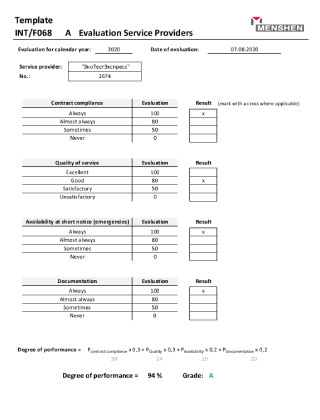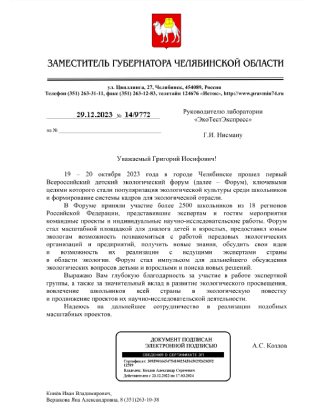- Escalate Profits: Master the Chicken Road challenge with four difficulty levels and a potential £20,000 maximum win at 98% RTP.
- Understanding the Core Gameplay
- Difficulty Levels and Risk Assessment
- Betting Strategies and Risk Management
- Understanding the RTP and House Edge
- Maximizing Your Winnings: Advanced Techniques
- Comparative Analysis of Difficulty Levels — A Table
- Essential Tips for New Players — A Checklist
- Key Takeaways for Successful Gameplay
Escalate Profits: Master the Chicken Road challenge with four difficulty levels and a potential £20,000 maximum win at 98% RTP.
The world of online casino games is constantly evolving, offering players new and exciting ways to test their luck and skill. Among the myriad of options available, crash games have gained significant popularity in recent years, captivating players with their simple yet thrilling gameplay. One such game that embodies this excitement is often referred to as ‘chicken road’, a fast-paced, visually engaging experience where players aim to cash out before a virtual chicken…well, meets an unfortunate end. This game’s appeal lies in its blend of risk, reward, and the potential for substantial gains.
This article will delve into the intricacies of this captivating game, covering its rules, strategies, different difficulty levels, and potential payouts. We’ll explore the reasons behind its rising popularity and provide insights for both novice and experienced players looking to maximize their chances of success in this thrilling casino adventure. We’ll also discuss the importance of responsible gaming and managing risk when playing this high-octane game.
Understanding the Core Gameplay
At its heart, the ‘chicken road’ game is remarkably simple to understand. A chicken progresses along a track, and with each step, a multiplier increases. The objective is to cash out before the chicken crashes, losing your bet. The longer you wait, the higher the multiplier, and consequently, the greater your potential winnings. However, patience is key, as one wrong move can lead to an immediate loss. The burst point, or the moment the chicken crashes, is completely random, adding an element of unpredictability to every round.
The game’s interface is typically clean and intuitive, displaying the current multiplier, the chicken’s progress along the track, and your active bet amount. Players can quickly adjust their bet size and cash out with a single click, making for a seamless and engaging experience. The fast-paced nature of the game also contributes to its appeal, maintaining a high level of tension and excitement.
A critical component of success lies in understanding the inherent risk associated with delayed cash-outs. The anticipated gains should always be weighed against the probability of a sudden crash. Strategies often revolve around setting profit targets or using stop-loss limits – concepts we’ll explore in greater depth later on.
Difficulty Levels and Risk Assessment
The ‘chicken road’ game typically offers various difficulty levels, each with a unique level of risk and reward. These levels adjust the length of the track and, crucially, the probability of the chicken crashing at any given point. Understanding these differences is paramount to formulating an effective playing strategy. Choosing a difficulty level depends on your risk tolerance and desired potential payout.
The easiest level, often labeled ‘Easy,’ features the longest track, offering a lower risk of an early crash but also a smaller multiplier. Conversely, the ‘Hardcore’ level presents the shortest track and the highest risk, but correspondingly promises the biggest potential payouts. Players should carefully consider their comfort level with risk before committing to a specific difficulty. It’s generally advisable to start with the easier levels to familiarize yourself with the game’s mechanics and then gradually progress to more challenging options as your confidence grows.
Experienced players often employ different strategies depending on the chosen difficulty level. On easier levels, they might aim for a larger number of smaller wins, while on harder levels, they may adopt a more conservative approach, waiting for significantly higher multipliers before cashing out. The key is adapting to the specific dynamics of each difficulty setting.
Betting Strategies and Risk Management
Success in ‘chicken road’ isn’t solely about luck; a well-defined betting strategy and effective risk management can significantly increase your chances of winning. Numerous approaches are employed by players, each with its own merits and drawbacks. One common strategy is the Martingale system, where you double your bet after each loss, hoping to recover previous losses with a single win. While potentially lucrative, this strategy can quickly deplete your bankroll if you encounter a prolonged losing streak.
Another popular tactic involves setting predetermined profit targets and stop-loss limits. A profit target defines the amount you aim to win per session, while a stop-loss limit determines the maximum amount you’re willing to lose. Reaching either of these limits signals the end of your playing session, preventing you from chasing losses or becoming overconfident. This method promotes discipline and responsible gaming.
Perhaps the most crucial aspect of risk management is understanding your bankroll and betting only a small percentage of it on each round. This ensures that you can withstand a series of losses without experiencing significant financial strain. Avoid chasing losses and remember that ‘chicken road’ is, ultimately, a game of chance.
Understanding the RTP and House Edge
RTP (Return to Player) is a crucial metric for any casino game, representing the percentage of all wagered money that is theoretically returned to players over the long term. ‘Chicken road’ typically boasts a high RTP of 98%, meaning that, on average, players receive £98 back for every £100 wagered. However, it’s essential to remember that RTP is a theoretical value calculated over millions of spins and doesn’t guarantee winnings in any single session. The higher the RTP, the better the chances for a player.
The house edge, conversely, represents the casino’s profit margin. In the case of ‘chicken road’ with a 98% RTP, the house edge is 2%. This means that the casino retains an average of £2 for every £100 wagered. While the house edge exists in every casino game, a relatively low edge like 2% is considered favorable for players. It’s important to be aware of both the RTP and the house edge to fully understand the dynamics of the game.
The RTP of 98% is a significant factor in the game’s appeal. This fair return rate appeals to players looking for attractive odds and a realistic chance of winning. However, responsible gambling habits are still required, even with an above average RTP.
Maximizing Your Winnings: Advanced Techniques
Beyond basic strategies, several advanced techniques can enhance your gameplay and potentially increase your winnings. One such technique involves observing the game’s patterns. While the crash point is random, some players believe they can identify subtle tendencies by analyzing previous rounds. This approach is highly debated, and its effectiveness remains questionable. However, it can add another layer of engagement to the game. The game operator, to ensure fairness, constantly randomizes the crash point.
Another strategy involves utilizing auto-cash-out features, if available. These features allow you to set a specific multiplier at which your bet will automatically cash out, eliminating the need for manual intervention. This is particularly useful for minimizing the risk of emotional decision-making, which can often lead to missed opportunities or losses. It is worth noting however that a reliable internet connectionis vital for using such feature.
Finally, it’s worth incorporating a progressive betting strategy where, assuming wins are generated, you steadily increase your wager size. A slight increase in wager can allow higher payout for your next win and enhance your gains. This needs to be carefully combined with stop-loss management.
Comparative Analysis of Difficulty Levels — A Table
| Easy | Longest | Lowest | 1.1x — 2.0x | Low |
| Medium | Moderate | Moderate | 1.5x — 3.0x | Medium |
| Hard | Shorter | Higher | 2.0x — 5.0x | High |
| Hardcore | Shortest | Highest | 3.0x — 10.0x+ | Very High |
Essential Tips for New Players — A Checklist
- Start with the ‘Easy’ difficulty level to understand the game’s mechanics.
- Set a budget and stick to it.
- Determine a profit target and a stop-loss limit.
- Practice responsible gaming habits.
- Familiarize yourself with the auto-cash-out function.
Key Takeaways for Successful Gameplay
- Understand the risk associated with each difficulty level.
- Develop a sound betting strategy.
- Implement effective risk management techniques.
- Be aware of the RTP and house edge.
- Practice discipline and avoid emotional decision-making.



















